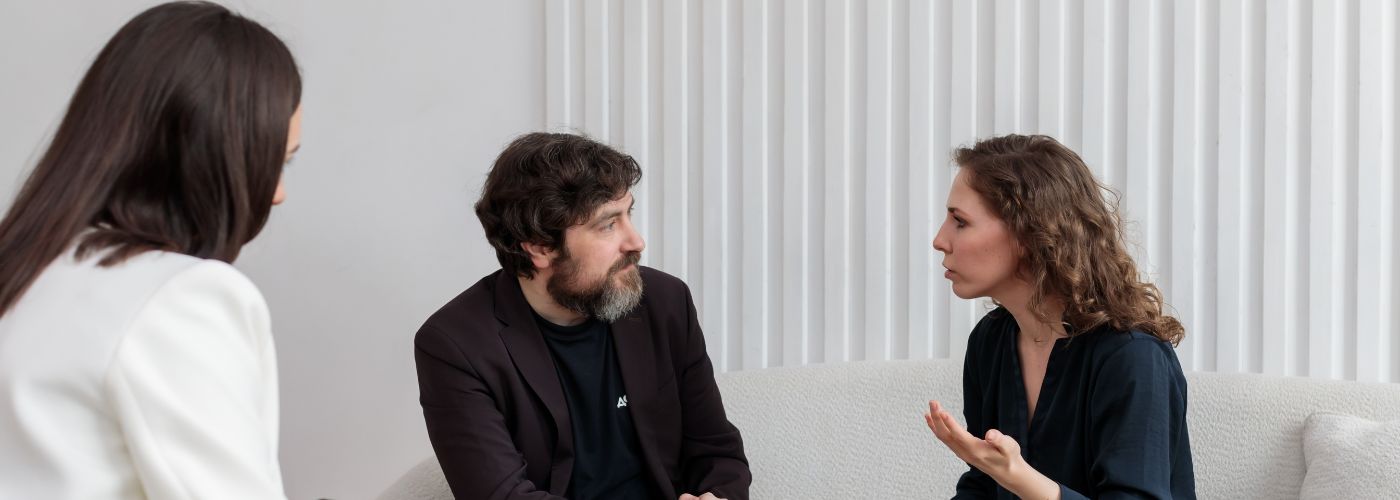Imagine transforming your relationship from routine interactions to meaningful connections with just a few mindful practices in couples therapy. Couples therapy is increasingly incorporating mindfulness techniques to help partners navigate their emotional landscapes more effectively.
In this article, we’ll highlight the best mindfulness practices in couples therapy that can assist your relationship with your partner.
Essential Mindfulness Practices in Couples Therapy
Mindfulness practices can be transformative tools for couples in therapy, fostering deeper connections and understanding.
One of the most effective mindfulness practices in couples therapy is the “Pause and Reflect” technique. This involves taking a moment during discussions to breathe deeply and reflect on emotions before responding. It encourages partners to express their feelings without reacting impulsively, creating a space for more thoughtful communication.
Another essential mindfulness practices in couples therapy is the “Gratitude Exchange.” Couples can take turns sharing something they appreciate about each other daily. This simple act shifts focus from problems to strengths, reinforcing positive feelings and counteracting negativity.
By cultivating gratitude, couples can build resilience, turning challenges into opportunities for growth together. Such mindfulness techniques not only enhance emotional intimacy but also lay the groundwork for a healthier relationship dynamic.
Set Intentions Together for a Shared Journey
Setting intentions together is a powerful practice for couples in therapy. It creates a shared vision that guides both partners on their journey.
When couples articulate their hopes and desires, they cultivate a deeper understanding of each other’s needs. This act not only fosters connection but also helps to align individual goals with the relationship’s aspirations.

Practice setting intentions by taking a moment to sit together in a quiet space, free from distractions. Begin by discussing what you each hope to achieve individually and as a couple. Each partner should take turns expressing their intentions, ensuring that both voices are heard and valued.
After sharing, write down your intentions on a shared piece of paper or a journal. This tangible representation serves as a reminder of your commitment to one another.
Consider categorizing your intentions into areas such as emotional connection, communication, intimacy, and shared experiences.
Practice Non-Judgmental Awareness During Discussions
One of the most powerful mindfulness practices in couples therapy is to practice non-judgmental awareness during discussions. This means listening to your partner without forming immediate opinions or reactions.
Instead of jumping to conclusions, take a breath and truly absorb their words. This approach fosters a safe space where both partners feel heard and valued, paving the way for more honest communication.
You can also practice non-judgmental awareness by observing your own thoughts and feelings as they arise during conversations. Acknowledge any judgments or assumptions you might have about your partner’s perspective, and gently set them aside.
This self-awareness allows you to engage more fully with your partner’s experience without letting your biases cloud the interaction.
Use Active Listening For Deeper Connections
Active listening is a powerful tool that can transform the dynamics of a relationship. In couples therapy, practicing active listening helps partners fully engage with each other’s thoughts and feelings.

This means not just hearing words but truly understanding the emotions behind them. By reflecting back what you hear, couples can create a space where both feel valued and heard, leading to deeper connections. This practice fosters empathy and encourages vulnerability, essential ingredients for healing.
Another essential mindfulness practice is the use of “I” statements during discussions. Instead of saying, “You make me feel…” try expressing your feelings with, “I feel…” This shift takes the blame off your partner and focuses on your personal experience.
It opens up a pathway for constructive dialogue rather than defensiveness. Additionally, incorporating regular check-ins can help couples maintain their emotional connection outside therapy sessions.
Just a few moments spent sharing daily highlights or challenges can reinforce intimacy and support emotional well-being.
Establish Rituals for Mindful Presence Together
Establishing rituals for mindful presence together can transform the dynamics of any relationship. Simple mindfulness practices in couples therapy, like sharing a daily cup of tea or taking a short evening walk, allow couples to connect without distractions.
These moments serve as anchors, reminding partners to be fully present with each other. Instead of rushing through life, these rituals encourage intentional time that nurtures emotional intimacy.
Another way to establish rituals together is by creating a shared gratitude practice. Each evening, partners can take turns expressing what they appreciated about each other or the day itself. This not only fosters positivity but also deepens appreciation for one another.
Additionally, couples can explore cooking together as a ritual. Preparing meals side by side encourages collaboration and communication, turning an everyday task into an opportunity for bonding.
As they chop, stir, and taste, they can engage in light-hearted conversation or share stories, reinforcing their connection.
Start Joint Meditation Sessions for Unity
One powerful way for couples in therapy to deepen their connection is by starting joint meditation sessions for unity. These shared moments allow partners to tune into each other’s energy and create a safe space for vulnerability.
Even just ten minutes of focused breathing can help couples release tension and foster empathy. As they sit together, they can visualize their relationship as a growing garden, nurturing love and understanding.
During meditation, be sure to maintain an open mind and heart. Couples can begin by sitting comfortably across from each other, closing their eyes, and taking a few deep breaths together.
This synchronized breathing helps establish a rhythm and connection. As thoughts arise, it’s important to acknowledge them without judgment and gently bring the focus back to the breath.
Overall, do these mindfulness practices in couples therapy. It can help with a stronger and fulfilling relationship.

Related Stories
Tips To Identify & Break Cycles of Trauma In Families
The legacy of trauma can haunt families for generations, but it doesn’t have to define
Oct
How To Recognize Avoidant Personality Disorder
Have you ever felt an overwhelming sense of dread at the thought of social interactions,
Sep
Exploring Art Therapy For Emotional Healing
What if the key to unlocking your emotional healing lies not in talk therapy, but
Aug